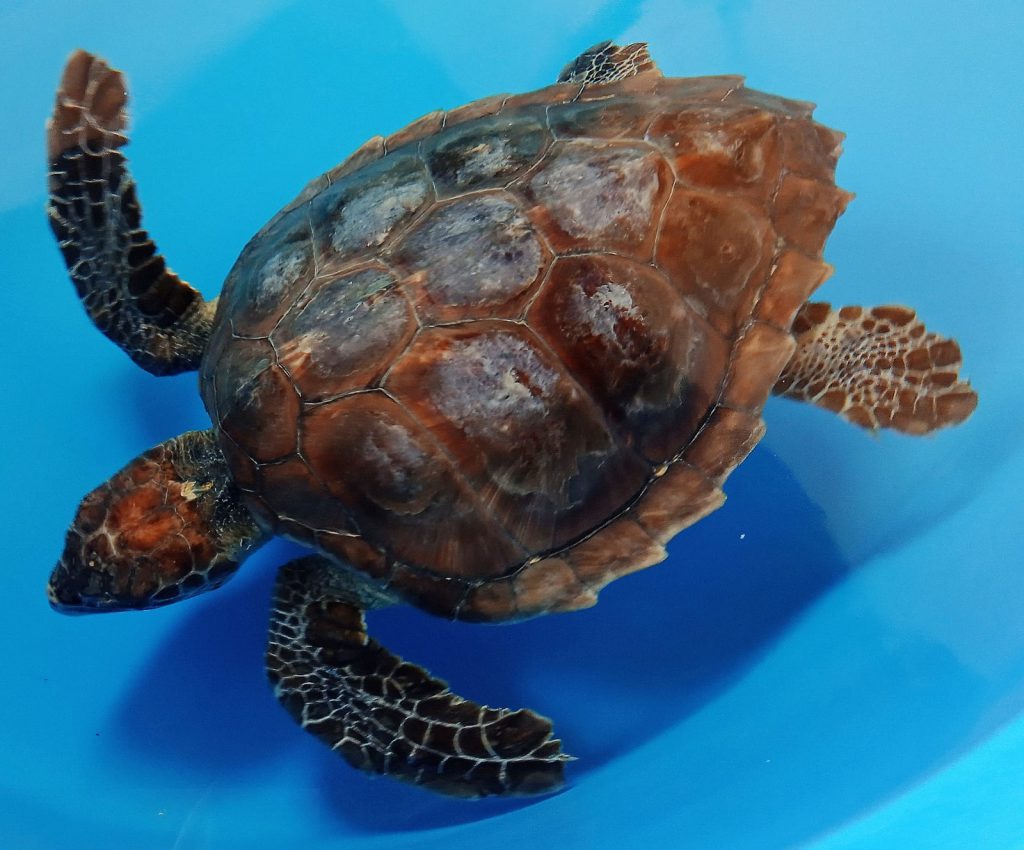Global warming is inexorably advancing, the increase in temperature is bringing climate change with negative effects on every species, including humans. By 2030, a 2° C increase in temperature is expected compared to pre-industrial values. Among the most influenced living species are reptiles, the most famous and most studied example of which concerns sea turtles. These have a link with the temperature of the environment that affects every stage of the life cycle, including hatching.

Global warming is bringing serious problems to every living species on this planet. The temperature is rising, an increase of at least 2 ° C is expected by 2030. The consequences are many, the climatic events once considered extraordinary (tornadoes, floods, landslides and so on), are increasing in periodicity while the increase of carbon dioxide in the atmosphere results in the acidification of the oceans and the greenhouse effect; the polar islands melt as the sea level rises. The situation is so critical that it required a global mitigation strategy, involving 196 countries during the 2015 Paris agreements, which undertook to keep the (now inevitable) temperature increase below 2° C.
The first to pay the consequences are those living species most sensitive to these changes. One of the most studied examples over the past 30 years are sea turtles. The peculiarity of these reptiles is that during their life cycle, they use both marine and terrestrial habitats, in particular this last phase concerns nesting. The effects of climate change have a devastating impact on these endangered species.
In all species of sea turtles, the success of reproduction depends mainly on the available terrestrial habitat. Memories of sea turtles are “imprinted” with a magnetic map of the sandy beach where they hatch. This gives them the ability to return to the same site where they were born decades later to repeat their ancient nesting ritual. The direct impacts of sea level rise include the loss of beaches, because of which sea turtle nesting beaches are starting to disappear.
Since sea turtles are reptiles, they are directly conditioned by the temperature of the environment in which they are found. The temperature, that of the sand in which the eggs are incubated, also influences hatches, affecting the relationship between the sexes. They only successfully incubate between 25° and 35° C. Incubation at low temperatures, usually in the lower part of the nest (28° C) typically results in males while at high temperatures, usually in the upper part (30° C) typically results in females.
Several studies have shown too high a temperature affects the body size of turtles, compromising the force they use in pushing through their fins and moreover when the temperature is too hot, eggs can literally cook.
The hatchling sea turtles are ectotherms, and their body temperature is determined by the temperature of the water in which they swim. The body temperature directly affects the locomotor performance of ectotherms with locomotor performance increasing with it.
So, it is possible to see that the increase in temperature has effects that go in opposite directions. On the one hand, it increases the nautical performance of sea turtles, improving the possibility of moving faster and taking to the open sea in a shorter time, reducing the possibility of being a prey in the first hours of life. On the other hand, it influences the growth capacity during incubation, compromising the development of the muscle fibers of the unborn. Recent studies have shown that the negative effect is predominant.
Furthermore, global warming on sea turtle colonies is leading to a feminization of the young. They found female sea turtles from the largest and most important colony of green sea turtles in the Pacific Ocean now outnumber males by at least 116 to 1. This result was predicted as early as 30 years ago, with the result that all of this has fulfilled by creating a significant threat to genetic diversity.
Warmer temperatures are likely to have a negative impact on food resources for sea turtles. Coral reefs, which are an important food source for sea turtles, are in grave danger. Due to rising temperatures, coral reefs suffer from a “bleaching” effect that kills parts of the reef.
Will sea turtles be able to survive current climate change? They have survived paleoclimatic regimes including dramatic temperature fluctuations. Turtles migrate and feed on huge spatial scales, which can also impart greater resilience and adaptability to the negative effects of climate change. The problem arises in the rapidity of change, which may leave no possibility for adaptation to sea turtles.
Ultimately, if turtles cannot adapt to the effects of climate change through the combination of physiological and behavioural mechanisms, they could face local or widespread eradication without zealous management. Everyone can contribute through simple steps that people can take to make a difference, while waiting for common strategies for the protection of sea turtles to be implemented.
- Purchase Energy-Star qualified appliances.
- Replace incandescent bulbs with energy efficient fluorescent ones.
- Reduce, reuse and recycle all plastic, glass and paper waste.
- Use energy-saving methods of transport.
- Getting informed, knowledge is power and collective influence can force change.
- Plant vegetation along the beaches to provide a better nesting habitat.
- Look for alternative sources of energy, such as solar or wind.
- Write to lawmakers to encourage more efficient use of energy.
Sources
- https://conserveturtles.org/information-sea-turtles-threats-climate-change/
- https://www.nationalgeographic.com/environment/2019/04/sea-turtle-sex-ratio-crisis-from-climate-change-has-hope/
- https://www.researchgate.net/profile/Matthew_Godfrey/publication/271827924_Thoughts_on_climate_change_and_sex_ratio_of_sea_turtles/links/54d24fe70cf25017917dbf40/Thoughts-on-climate-change-and-sex-ratio-of-sea-turtles.pdf
- https://www.int-res.com/abstracts/esr/v9/n1/p33-40/
- http://aerg.canberra.edu.au/library/sex_reptile/Davenport%201997%20Climate%20change.pdf
- https://www.int-res.com/abstracts/esr/v7/n2/p137-154/
- https://journals.plos.org/plosone/article?id=10.1371/journal.pone.0023162

